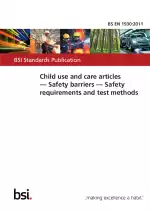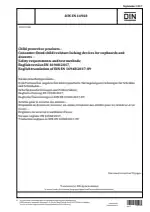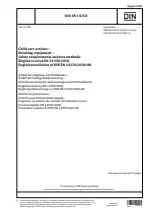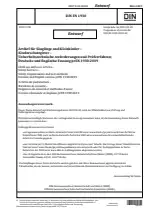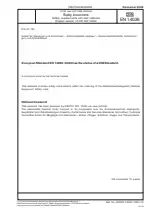Child Use and Care Articles - Safety Barriers - Safety Requirements and Test Methods
Also Known As:
For child safety barriers used in indoor home settings, the DIN EN 1930 standard establishes safety requirements and test procedures. In order to limit a child's access and stop infants up to 24 months old from passing through, these barriers are specifically made to be fitted across openings within the home. It's significant to note that safety barriers intended for use on windows are not covered by this standard.
The standard specifies the safety standards and requirements that these barriers must adhere to in order to safeguard young children. These rules are designed to reduce the possibility of mishaps or injuries, giving parents and other caregivers confidence in the security and efficiency of these items. The standard also specifies test procedures that producers and oversight organizations can use to determine whether the safety requirements are being followed, ensuring that the barriers adhere to the necessary criteria for quality and safety.
| Descriptors | Babies, CE marking, Child safety barriers, Children, Closures, Definitions, Design, Dimensions, Equipment safety, Erecting (construction operation), Fitness for purpose, Furniture, Grille rods, Hand-rails, Household use, Infants, Instructions for use, Limitations, Locking and locating devices, Marking, Materials, Protective gratings, Safety engineering, Safety of products, Safety requirements, Spaced, Specification (approval), Suspending (hanging), Testing, Wood, Suspensions, Distances, Bodies |
| ICS Codes | 97.190 - Equipment for children |
| Language(s) | English |
| File Size | 1.4 MB |


